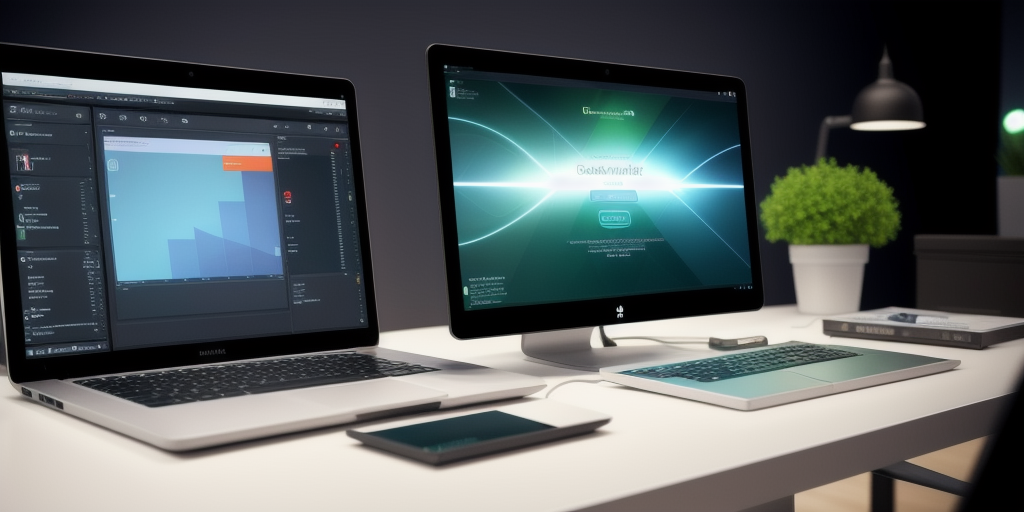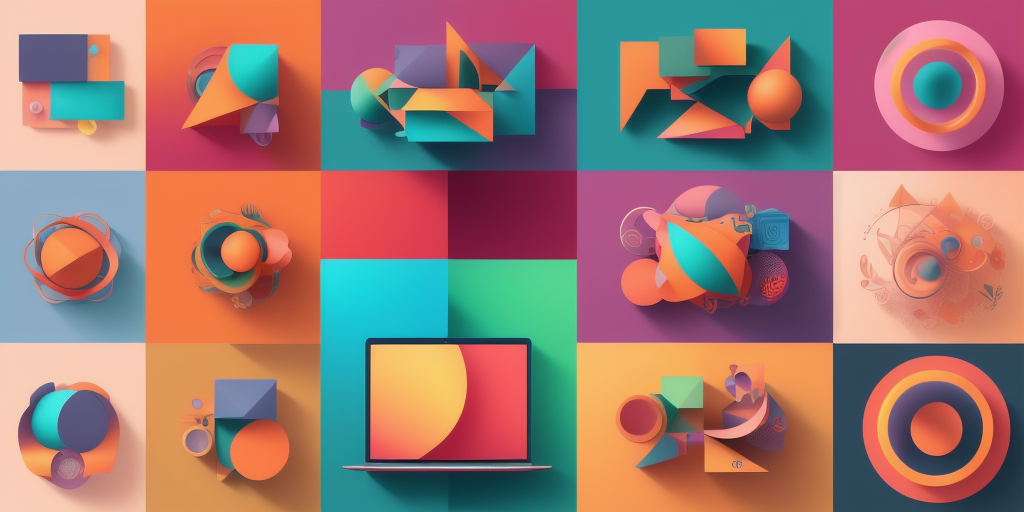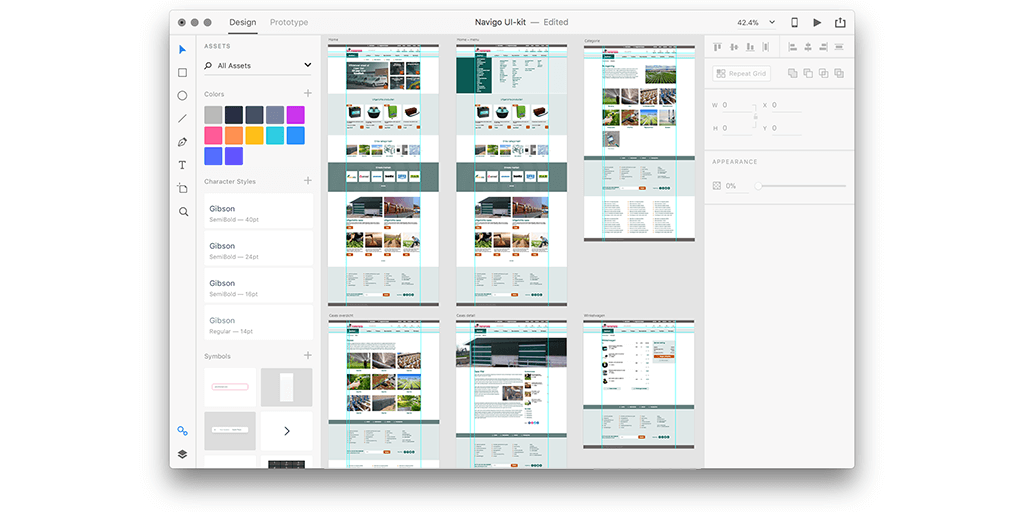Are you ready to dive into the exciting world of engineering software products? It’s a dynamic field that blends creativity with technology, resulting in user-friendly digital experiences. From designing sleek interfaces to optimizing functionality, digital product designers are the masterminds behind seamless user interactions and visual elements that enhance branding.
Digital product design is all about enhancing usability, functionality, and aesthetics in the digital space. Whether it’s developing a concept for a new brand or creating visually stunning designs, these designers bring ideas to life. Looking to learn more about branding, engineering, user testing, and software products? This dedicated article will provide you with valuable information and knowledge about this fascinating discipline.
So, if you’re a designer curious about how to craft engaging digital products or want insights into user testing, interaction, system design, and interface design for websites, you’re in the right place. Let’s start exploring the captivating realm of digital product design together!
Definition and Components of Digital Product Design
Digital product design involves the creation and refinement of digital products. It encompasses several components that contribute to the overall process, including the designer who utilizes software programs to bring their idea to life.
- Research: Understanding consumer needs, market trends, and competitor analysis are essential aspects of designing software products. This step helps designers gain insights into what consumers expect from a digital product, whether it’s a project or an idea.
- Ideation: Once the research is complete, designers brainstorm ideas and concepts for the software project. This phase encourages creativity and innovation to develop unique solutions for the website that address user pain points and utilize data.
- Prototyping software: Creating prototypes allows designers to visualize their ideas in a tangible form on a website. These prototypes can be basic wireframes or interactive mockups that simulate the user experience, providing valuable help in the digital space before moving forward.
- Testing: Software testing is crucial in identifying any usability issues or areas for improvement within the website’s digital product design. User feedback data is collected through various methods such as surveys, interviews, or usability testing sessions with the designer.
- Iteration: Based on user feedback gathered during testing, software designers refine and iterate on their initial website designs to enhance usability, functionality, and overall user experience for people. They analyze data to make informed decisions.
The primary objective of software design is to facilitate digital product creation that effectively aligns with both the end-user’s requirements and the business objectives. This can be achieved by integrating research, brainstorming, prototyping, testing, and iterative design in the process. This approach enables professionals to develop digital products that not only appeal to users but also contribute to business success.
Importance of SEO Content Writing in Digital Product Design
SEO content writing is an essential component for software designers and data professionals in digital product design. It plays a crucial role in driving organic traffic to digital products and improving their search engine visibility. By incorporating relevant keywords, software designers and data professionals can optimize the content to ensure that the product is easily discoverable by users.

One of the key benefits of well-written SEO content is its ability to enhance the overall user experience in interaction design. By providing valuable information, it not only attracts users but also keeps them engaged with the software. This leads to increased user satisfaction and can potentially result in higher conversion rates due to good design. Additionally, visual design plays a crucial role in capturing and retaining user attention.
To illustrate the value of SEO content writing in digital product design, consider the following points for one designer to use.
- Optimizing content for search engines not only increases organic traffic but also enhances user experience design and attracts more visitors to digital products. This helps in expanding the reach and potential customer base, making it a crucial aspect of good design. A skilled designer understands the significance of visual design and incorporates it into the content to optimize for search engines.
- Improved search engine rankings: By strategically using good design and visual design keywords throughout the content, it becomes easier for search engines to understand what the digital item offers and rank it higher in relevant search results. This ultimately enhances the overall digital experience.
- Enhanced user engagement: Well-written SEO content with a good design provides valuable information that addresses users’ needs and interests, making them more likely to explore further and engage with the product. A visually appealing digital experience created by a skilled designer can also play a significant role in capturing and retaining user attention.
- Higher conversion rates: When users find relevant information through good product design and great product design, they are more likely to trust and convert into customers or take desired actions. This is why having a solid product design strategy and hiring a skilled product designer is crucial.
- Competitive advantage: Incorporating effective SEO strategies in content design sets digital products apart from competitors by ensuring better visibility and use in search results.
Role and Responsibilities of a Digital Product Designer
A digital product designer plays a vital role in the creation of user-centric interfaces. They are responsible for conceptualizing and designing interfaces that meet the needs and preferences of users. Collaboration with cross-functional teams is an essential aspect of their work, ensuring that design aligns with business objectives.
The responsibilities of a digital product designer encompass various tasks throughout the design process. They conduct user research to gain insights into user behavior, preferences, and pain points. This research helps them understand how to create intuitive and engaging interfaces.
Based on their research findings, digital product designers create wireframes and prototypes. These visual representations allow them to test different design concepts before finalizing the interface. Feedback from users and stakeholders helps them iterate designs, continuously improving usability and functionality.
To summarize, the role of a digital product designer involves the use of various skills and techniques to create and design user-friendly and visually appealing digital products.
- Conceptualizing and designing user-centric interfaces.
- Collaborating with cross-functional teams to align design with business objectives is crucial for a product designer to effectively use their skills and expertise.
- Conducting user research to gain insights into user behavior.
- Creating wireframes and prototypes for testing different design concepts.
- Iterating designs based on feedback received.
Digital product designers play a crucial part in creating products that are visually appealing, intuitive, and enjoyable for users to interact with. By combining their creative skills with an understanding of user needs, they contribute significantly to the success of digital products.
So whether you’re looking for someone who can bring your ideas to life or seeking a career as a digital product designer yourself, understanding the importance of this role to us is key!
Skills Required for Digital Product Design
To succeed in the field of digital product design, there are several key skills that designers need to possess. These skills are essential for creating visually appealing interfaces and ensuring effective design creation. Let’s explore the necessary skills in more detail:

- Strong visual design skills: Designers must have a keen eye for aesthetics and be able to create visually appealing interfaces. They should have a good understanding of color theory, typography, and layout principles.
- Proficiency in UX/UI design tools: To bring their designs to life, designers need to be proficient in using UX/UI design tools such as Sketch or Adobe XD. These tools provide the necessary features and functionalities to create interactive prototypes and wireframes.
- Knowledge of front-end development languages: While designers may not be responsible for coding the final product, having a basic understanding of front-end development languages like HTML/CSS is crucial. This knowledge allows them to understand technical constraints and collaborate effectively with developers.
By possessing these skills, digital product designers can meet the needs of today’s fast-paced digital landscape. They will be equipped to create engaging user experiences while considering both visual appeal and technical feasibility.
Examples of Successful Digital Product Designs (Airbnb and Uber)
- Airbnb revolutionized the travel industry with its great product design, offering a platform where users can rent unique accommodations worldwide. This good product design has made it easy for travelers to find and book their ideal stays. The success of Airbnb can be attributed to their innovative content design, which showcases properties in an appealing way. As a result, Airbnb has become a go-to choice for travelers and a leading example of excellent product design. If you are a product designer looking for inspiration, studying Airbnb’s approach can provide valuable insights.
- Uber revolutionized the transportation industry with its great product design – an intuitive app that effortlessly connects riders with drivers. This innovative solution was made possible by their talented product designer and effective product design strategy.
The success of both Airbnb and Uber lies in their intuitive interfaces, streamlined booking processes, and focus on customer experience. These tech companies have set remarkable examples in the digital product design space, showcasing how good design can lead to tremendous success.
Airbnb
- Airbnb disrupted the traditional hotel industry with its great product design by allowing individuals to list and rent out their properties as accommodations. This innovative approach, combined with good product design, has made Airbnb a popular choice for travelers worldwide. As a product designer, it is important to consider content design when creating a platform like Airbnb to ensure a seamless user experience.
- Users can easily browse through a wide range of options, from cozy apartments to luxurious villas, thanks to the good product design. This allows for a more personalized travel experience and showcases the expertise of the product designer.
- The platform’s user-friendly interface enables product designers who are travelers to search for specific locations, filter results based on preferences, and read reviews from previous guests.
- The seamless booking process, designed by our product designer, ensures that users can secure their desired accommodation with just a few clicks.
Uber
- Uber, with its innovative ride-hailing service accessible through a mobile app, revolutionized urban transportation. This was made possible by the expertise of their product designer.
- With Uber’s straightforward interface, product designers can request rides within minutes and track their driver’s arrival in real-time.
- The app’s integration with GPS technology ensures accurate pickup locations and efficient navigation.
- By focusing on safety measures such as driver background checks and cashless transactions, Uber has gained trust among its customers.
Seamless Integration of Product Design Tools
Product design tools like Figma and InVision play a crucial role in enabling collaboration among designers and stakeholders. These tools provide a seamless platform for real-time feedback, version control, and smooth handoff between design and development teams.
With the integration of these tools into the design workflow, efficiency and productivity are greatly enhanced. Designers can work more effectively by utilizing the features offered by these software products. Here’s why seamless integration is essential for good product design:
Collaboration: These tools foster collaboration by allowing multiple designers to work simultaneously on wireframes, prototypes, and mockups. They provide a centralized space where team members can share their ideas and iterate on designs together.
Real-time feedback: Through these product design tools, stakeholders can provide instant feedback on prototypes or designs. This immediate feedback loop enables designers to make necessary adjustments promptly and ensures that potential solutions are explored efficiently.
Version control: Keeping track of changes made during the design process is made easy with version control features provided by these tools. Designers can refer back to previous iterations, compare different versions, and restore earlier designs if needed.
Seamless handoff: Integrating product design tools into the workflow streamlines the handoff between designers and developers. By sharing interactive prototypes or design specifications directly from these tools, communication gaps are minimized, resulting in smoother collaboration between teams.
User Journey Mapping for Optimal User Experience
User journey mapping is a powerful tool in digital product design that allows designers to visualize the user’s interaction with a product from start to finish. By mapping out the various touchpoints and steps involved in the user’s journey, designers gain valuable insights into the overall user experience.
One of the key benefits of user journey mapping is its ability to identify pain points and areas where users may drop off. By understanding these pain points, designers can make informed decisions on how to improve the product’s flow and address any obstacles that may hinder a smooth user experience.
To optimize the user experience, designers can use the insights gained from user journey mapping to refine and enhance various aspects of the product. This includes improving navigation, streamlining user flows, and ensuring that each step aligns with the needs and expectations of target users. By taking into account real-world experiences and feedback through methods like user testing, designers can iterate on their designs to create a more satisfying end-user experience.
User journey mapping also serves as an opportunity for market research. By analyzing different stages of the user journey, designers can uncover valuable insights about their target audience’s preferences, behaviors, and pain points. This information can then be used to inform decisions regarding features, content placement, or even search engine optimization strategies for websites.
Differentiating Product Design from UX and UI Design
Product design encompasses both UX (user experience) and UI (user interface) design. While they are closely related, there are distinct differences between the two.
UX focuses on understanding user needs, conducting research, creating wireframes, and ensuring usability.
- User needs: UX designers prioritize understanding the target audience’s requirements and expectations.
- Research: They conduct thorough research to gather insights about user behaviors, preferences, and pain points.
- Wireframes: UX designers create wireframes that outline the structure and layout of a digital product.
- Usability: They ensure that the product is intuitive, easy to navigate, and provides a seamless user experience.
UI design involves crafting visually appealing interfaces that align with brand guidelines while maintaining usability.
- Visual appeal: UI designers focus on creating visually appealing interfaces using color schemes, typography, icons, and imagery.
- Brand alignment: They ensure that the design elements reflect the brand’s identity, values, and aesthetics.
- Usability: UI designers prioritize maintaining usability by designing clear navigation systems and interactive elements.
Prioritizing Customer Outcomes over Features
Digital product designers should prioritize solving customer problems rather than adding unnecessary features. Understanding user needs through research enables designers to create products that address specific pain points effectively. By prioritizing customer outcomes, digital products are more likely to succeed in meeting user expectations.
- Functionality: Rather than focusing solely on the features of a digital product, designers should consider the functionality that will benefit customers the most. This means identifying and addressing the core problems or pain points that customers face.
- Empathy with Customers: Designers need to have empathy for their customers and understand their goals, objectives, and desired outcomes. By putting themselves in the shoes of the customers, they can design products that truly meet their needs.
- Competitor Analysis: To prioritize customer outcomes, it is important for designers to conduct competitor analysis. This helps them identify areas where competitors may be falling short in addressing customer problems and allows them to differentiate their own product by providing better solutions.
- Business Strategy Alignment: Prioritizing customer outcomes also requires aligning business strategies with customer needs. Designers must ensure that their product not only solves customer problems but also supports the overall business objectives and goals.
- Research-driven Approach: A research-driven approach is crucial for understanding customer problems and creating effective solutions. Through user research methods such as interviews, surveys, and usability testing, designers can gather valuable insights that inform their decision-making process.
By prioritizing customer outcomes over features, digital product designers can create products that truly resonate with consumers. This approach not only improves user satisfaction but also drives business success by delivering tangible benefits to customers.
Prototyping and Testing in the Digital Product Design Process
Prototyping is a crucial step in the digital product design process. It allows designers to create interactive mockups of their designs for testing purposes. By building prototypes, designers can gather valuable feedback from users and make informed decisions about their designs.
Testing prototypes with users provides insights into usability issues or areas needing improvement. This user-centered approach helps designers understand how people interact with their digital products. Through testing, designers can identify pain points, navigation challenges, or any other obstacles that may hinder a smooth user experience.
Iterating based on user feedback ensures that the final product meets user expectations effectively. Designers take the feedback received during testing and implement necessary changes to enhance the product’s usability and overall experience. This iterative process enables continuous improvement, ensuring that the final digital product aligns with user needs and preferences.
In the digital product design process, prototyping and testing play a vital role in creating successful products. They allow designers to validate their ideas early on, gather data-driven insights, and refine their designs accordingly. By incorporating these steps into the design process, designers can minimize risks associated with launching an untested product.
Key Takeaways from Digital Product Design
In conclusion, digital product design plays a crucial role in creating successful and user-friendly digital products. By understanding the key takeaways from this field, you can enhance your own digital product design process.
Firstly, it is essential to prioritize customer outcomes over features. Instead of focusing solely on adding numerous functionalities, concentrate on delivering value and solving specific problems for your users.
Secondly, seamless integration of product design tools is vital for efficient collaboration and streamlined workflows. By utilizing a range of tools that complement each other, you can optimize your design process and enhance productivity.
User journey mapping is an effective technique for ensuring optimal user experience. Mapping out the steps and touchpoints that users go through allows you to identify pain points and make improvements accordingly.
Differentiating product design from UX and UI design is also important. While they are interconnected, understanding their unique roles helps in creating cohesive designs that align with the overall user experience strategy.
Furthermore, prototyping and testing are crucial steps in the digital product design process. By creating prototypes and gathering feedback from users early on, you can iterate and refine your designs based on real-world insights.
To excel in digital product design, acquiring the necessary skills such as problem-solving abilities, creativity, empathy, and technical proficiency is essential. Continuously developing these skills will help you stay ahead in this rapidly evolving field.
In conclusion, by following these key takeaways from digital product design, you can create innovative products that meet user needs while staying competitive in today’s market.
FAQs
What makes a successful digital product design?
A successful digital product design focuses on delivering value to customers by prioritizing their outcomes over features. It involves seamless integration of tools for efficient collaboration and utilizes techniques like user journey mapping to ensure optimal user experience.
How does prototyping contribute to the digital product design process?
Prototyping allows designers to create interactive models of their digital products, enabling them to gather feedback from users early on. This feedback helps in refining and improving the design based on real-world insights.
What skills are required for digital product design?
Digital product designers need a combination of problem-solving abilities, creativity, empathy, and technical proficiency. These skills enable them to understand user needs, create innovative solutions, and effectively communicate their designs.
How does user journey mapping enhance the user experience?
User journey mapping involves visualizing the steps and touchpoints that users go through when interacting with a digital product. It helps identify pain points and areas for improvement, ensuring a seamless and satisfying user experience.
How is digital product design different from UX and UI design?
While interconnected, digital product design focuses on the overall strategy and creation of a product, while UX (user experience) design concentrates on enhancing usability and satisfaction, and UI (user interface) design deals with the visual elements that users interact with directly.





